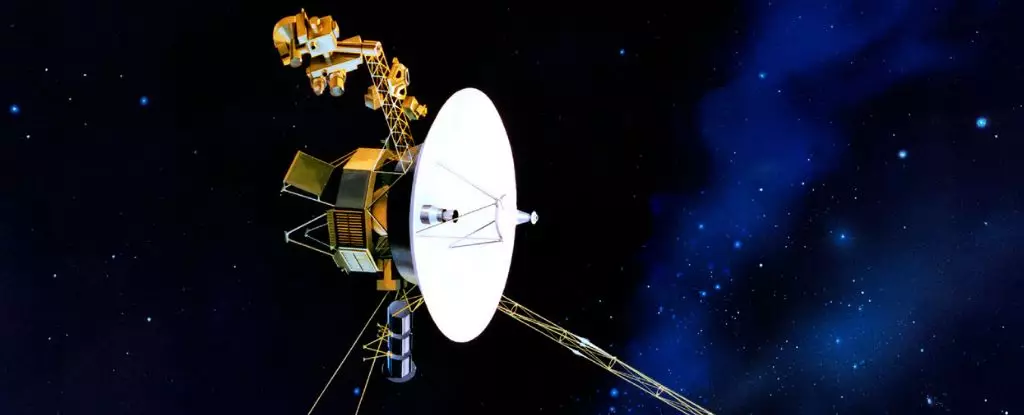The Voyager program, comprising two legendary spacecraft launched in 1977, signifies an enduring chapter in humanity’s quest for knowledge about our solar system and beyond. Voyager 1 and Voyager 2 have traversed the vastness of space for over four decades, transcending their initial missions and heading into interstellar space. However, as both crafts continue their expedition, the reality of fading power looms large, prompting NASA to make significant operational adjustments.
The primary power source for the Voyager spacecraft is derived from radioisotope thermoelectric generators (RTGs), which harness the heat emitted from the decay of plutonium. While initially capable of generating approximately 470 watts, the energy output has progressively dwindled over the years, losing about 4 watts annually. As a consequence of this decline, NASA has recently decided to deactivate Voyager 2’s plasma science instrument, which is responsible for measuring ionized particles and their directional flow. This choice underscores the delicate balancing act mission engineers must perform to maximize the remaining instruments’ functionality.
With the plasma science instrument yielding limited data in recent years, the decision to turn it off reflects an operational necessity rather than just a scientific loss. The ongoing power constraints mean that by the 2030s, Voyager 2 may be reduced to just a single functioning instrument, further shifting its role from an active scientific probe to a functional relic, preserving the end of an era in space exploration.
Voyager 1 and Voyager 2 were designed to deliver groundbreaking insights into the outer planets, making historic flybys of Jupiter, Saturn, Uranus, and Neptune. The information gathered not only expanded our understanding of these gas and ice giants but also produced stunning visual data that transformed our perceptions of the outer solar system. As they journeyed through the heliosphere—the sun’s protective bubble—the two spacecraft provided invaluable information, ultimately assisting scientists in deciphering the nature of solar wind and cosmic rays.
Both spacecraft are now in the Voyager Interstellar Mission phase, venturing into regions of space never before explored. The heliopause marks the boundary between the heliosphere and interstellar space, a frontier that Voyager 1 crossed in 2012, followed by Voyager 2 in 2018. The scientific data garnered remains invaluable, characterizing the dynamics of interstellar mediums and the relations between solar particles and their cosmic environment.
However, as the instruments continue to age, NASA has had to narrow their focus. For instance, utilizing the plasma science instrument has become increasingly infrequent, with operational checks performed just quarterly. This limited activity led to the inevitable decision to power it down, emphasizing the practical constraints the mission faces.
Launched as a part of a grand endeavor to explore the outer planets, the Voyagers were conceived during a rare alignment of planetary bodies that occurs roughly every 175 years. This opportunity facilitated a highly efficient trajectory for both spacecraft, allowing them to visit multiple destinations with reduced fuel consumption. The engineering foresight and planning surrounding these missions stand as a testament to human ingenuity and ambition in the field of space exploration.
As both Voyager probes continue to navigate through interstellar space, they serve as ambassadors of humanity, carrying golden records inscribed with sounds and images from Earth. They are reminders of our interconnectedness and curiosity, reaching out into the universe to communicate humanity’s existence and achievements.
Though the plummet in power marks a pivotal moment for the Voyager missions, it doesn’t entail a complete cessation of scientific exploration. With operational instruments still collecting and transmitting data about cosmic phenomena, there remains hope for discovery until the last watt is extinguished. As the scientific community anticipates the eventual shutdown of all but one instrument, the legacy of the Voyager spacecraft will endure, continuing to inspire future missions exploring the great beyond.
While the scientific tools within these remarkable probes are being put into hibernation, the influence of the Voyager missions extends far beyond their energy outputs. Their discoveries have redefined our celestial understanding, and as we bid farewell to these champions of exploration, we recognize their indelible mark on the saga of space exploration. The day may soon come when we lose contact with Voyager 2, but its legacy—rich with knowledge and possibility—will resonate for generations to come.


Leave a Reply